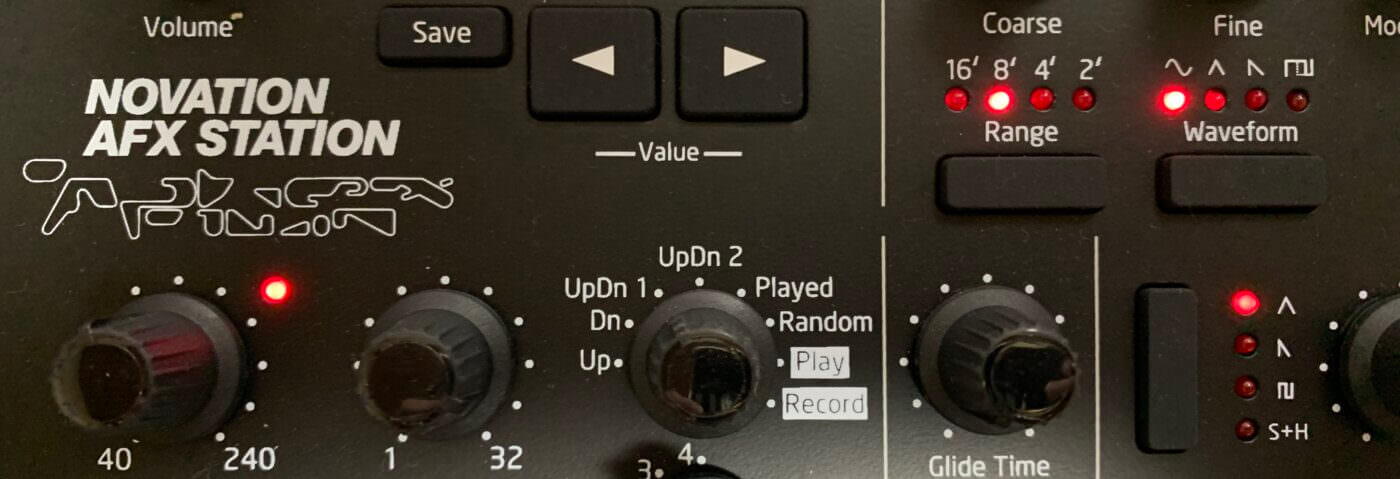Novation’s Bass Station II gets a new name and new look. Is it more than just the Analord’s New Clothes?
Yes, Novation have released a limited edition version of the Bass Station II called the AFX Station. Yes, it was made in collaboration with Richard James aka the Aphex Twin. Yes, it has new screen printing featuring Aphex Twin logos. And yes, it comes in a box designed by Weirdcore, Richard’s visual collaborator. If any of these statements had you salivating like the proverbial Pavlovian dog, then you really don’t need to read any further. Get yourself and your credit card down to the shops and pick one up before they’re all sold out. If, however, you found yourself rolling your eyes and muttering words like “cash grab” then it’s you that we need to convince. For beyond the fancy new livery, this is still a Bass Station II—and that’s reason enough to want one.
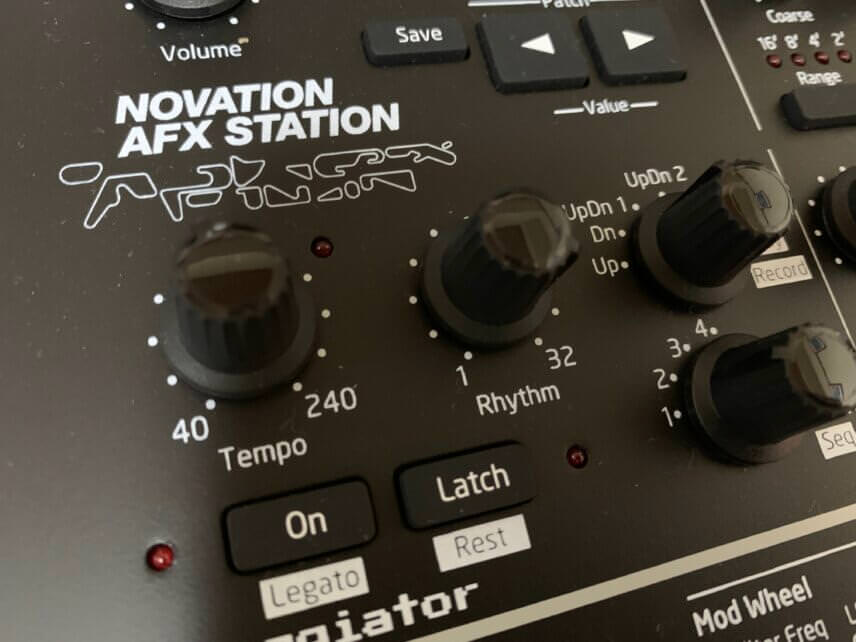
Bass Station.History [1993]
The original BassStation was designed by the legendary (and sadly late) British synth engineer Chris Huggett for Novation in 1993. Bucking the trends of the time, it was analogue and very much made for producers of house and techno. It featured oscillators and filters based on those from Huggett’s own Wasp, another British classic and source of inspiration for the synth-pop scene in the early ‘80s. The Bass Station was followed by the Bass Station Rack in 1994 and the Super Bass Station in 1997, each iteration gaining additional functionality (syncable LFO, external in and CV/gate in 1994 and a sub oscillator, ring mod and noise in 1997).
In 2013, Novation returned to the bass source once again for the Bass Station II, creating a new and very modern-sounding analogue instrument. This was around the same time as the Arturia Minibrute and Korg MS-20 Mini were coming to market. Clearly, an analogue Renaissance was in the works, and the Bass Station II was at the forefront of this. Novation have continued to make adjustments to the BS II via firmware updates, including some developed with Richard James (who had also been working with Korg on the Monologue design). As with the Monologue, Novation unlocked microtuning capabilities in their analogue synth and then eventually the AFX Mode, more of which in a minute.
Classic Analogue Architecture [original huggett mix 4]
At its heart, the AFX Station/Bass Station II is a two-oscillator monosynth. We say “at its heart” as there’s so much it can do (and new functionality is seemingly being added every year via firmware updates) that it’s a little more complicated than that. But it’s a good place to start. Each oscillator can play from 16 to 2 feet and has four selectable waveforms: sine, triangle, sawtooth and pulse. Pulse width can be modulated manually, via LFO 2 or the modulation envelope. Oscillators can also be synced. Additionally, there’s a sub-oscillator that can do a sign, square or pinched pulse. And, as of firmware update 4.14 (included in the AFX Station), the sub can be decoupled from oscillator 1 and tuned independently, effectively making it into a three-oscillator monosynth. Can you say one-finger chords?
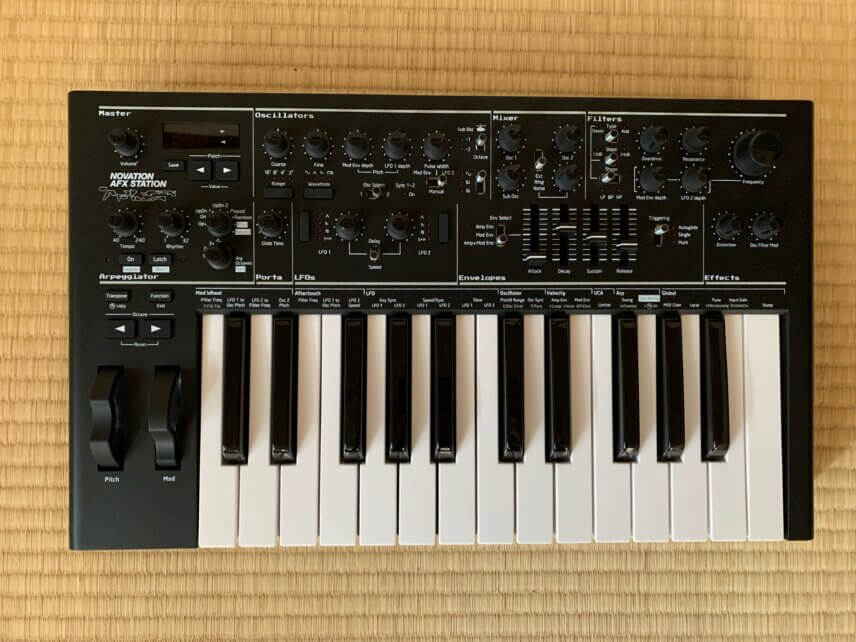
Next is the multimode filter, which has lowpass, bandpass, and highpass modes, each with two slopes: 12dB and 24dB. This is the Classic mode, which is based on the original Bass Station filter (which was in turn based on the Wasp’s filter). There’s also an Acid variation, which is a fixed-slope 24dB/octave diode-ladder design inspired by the Roland TB-303. It doesn’t stop there. There’s filter overdrive and the filter frequency can also be modulated by Oscillator 2, perfect for adding in all kinds of unpredictable grit.
Modulation-wise, there are three envelopes (amplifier, modulation, and a third for either) and two LFOs, each with triangle, sawtooth, square and sample and hold waveforms. As space is at a premium in this two-octave synth, there’s only one set of ADSR sliders to be shared by all three envelopes. Kind of a bummer but to keep the footprint small, the tradeoff for one-knob per function would have been less envelopes. A recent firmware update also added fixed-duration sustain envelopes and envelope looping with a selectable number of repeats.
There’s much, much more, including an arpeggiator, step sequencer, portamento, and distortion circuit. In fact, there’s almost a little too much going on and we haven’t even gotten to AFX Mode and overlays yet. But complaining about too much of a good thing seems tacky. It just means spending a little more time with the manual getting to know it than you would with, say, a Minibrute.
Meltphace AFX Mode [8.2]
Now the AFX Mode. The story goes that Mr. James sent an email to Novation with an idea for a new synth, one where every key could trigger a different patch. This eventually found its way into the Bass Station II via firmware update 4.14 and was dubbed AFX Mode. Of course, Richard did eventually get his wish with the now released AFX Station, which comes bundled with AFX Mode as well as very welcome additional screen printed AFX Mode information on the face.
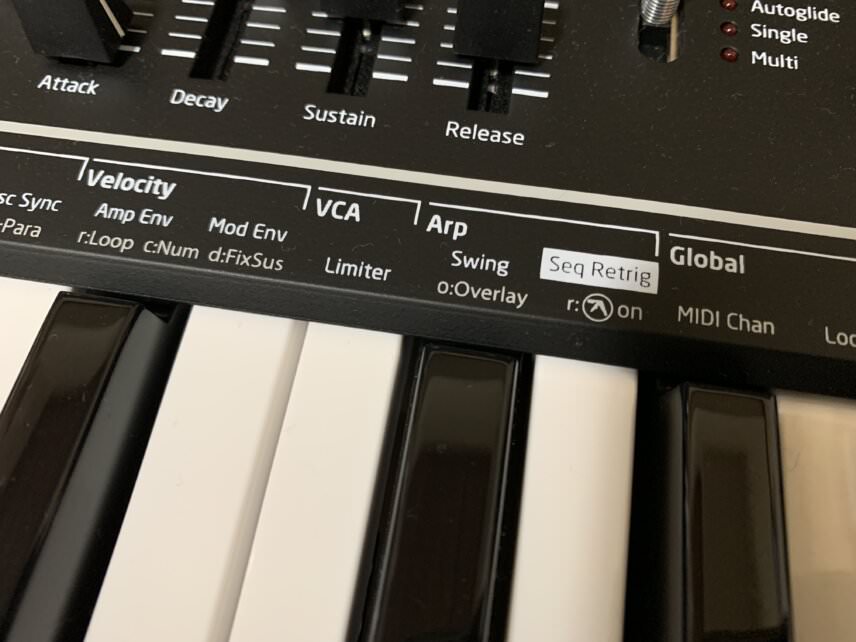
With this new mode, you can program a different patch for each of the 25 keys across the initial two octaves. These patches, called overlays, can have entirely unique tunings, oscillator settings, filter tweaks, you name it. You can easily make a run of different percussion sounds, make small tweaks to melodic notes, or a combination of the two. These really come alive when used with the arpeggiator or step sequencer.
AFX Mode is so much fun and—once you wrap your head around the idea of overlays—fairly easy to get going in. It’s such an obvious feature too, it makes you wonder why it hadn’t been thought of before. But that’s why he’s the Aphex Twin, right?
You Really Do Need It (AFX Mix)
The Bass Station II was already a fantastic analogue monosynth. Deep bass, plenty of synthesis options, excellent and rich sound—it’s clearly the result of decades of experience in the music industry. And, thanks to AFX Mode and all the other welcome and extremely useful additions via firmware, it’s better than ever.
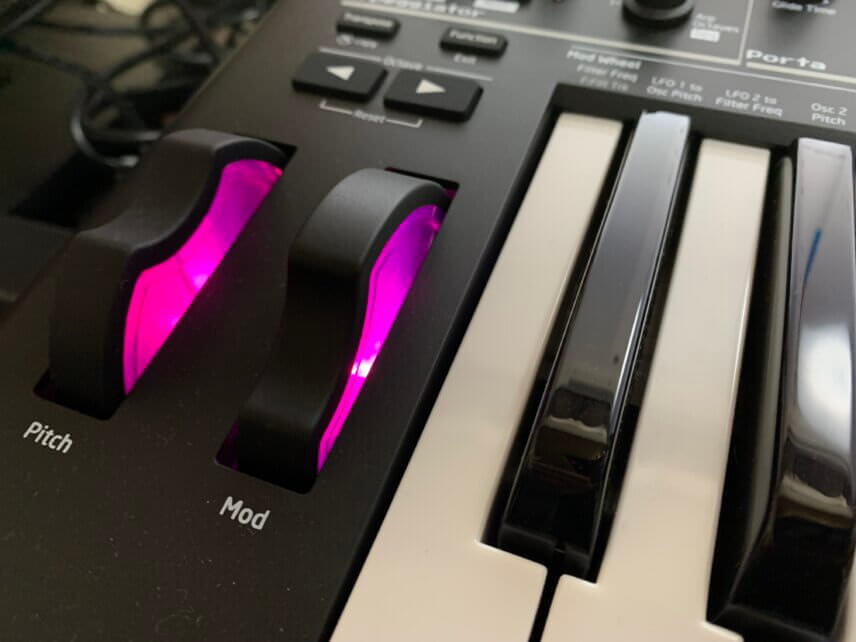
It’s now time to reference the AFX in the room. Does rebranding the Bass Station II with new colours and Aphex Twin logos make it a better machine? Better, no. But it certainly is fun. The black with purple accents is much more attractive to our eyes than the original blue and white. We were even impressed with the box, which is maybe a first for us.
Before you strain something rolling your eyes, though, keep in mind that we’re not even Aphex Twin superfans. Of course, we enjoy his music but also have to admit that a lot of it sounds quite samey. Nonetheless, we love the idea of an artist-branded synth and wonder why it isn’t more commonplace. Surely there’s room on the shelves for a Boards Of Canada polysynth, a Richie Hawtin acid box, an Egyptian Lover 808?
Really, this feels like a win-win all around. If you like Aphex Twin (even passingly) and don’t yet have a Bass Station II, there’s nothing here to dislike. Of course, if you’re already happy with your original BS II and don’t so much care for Mr. James and his antics, then as you were. But if you’re already reading this and haven’t yet experienced what Novation’s monosynth can do, you really do owe it to yourself to try it out. It’s a modern classic and the Aphex Twin extras just add to the fun.
The Verdict
Price: £399.99
Purchase: Novation AFX Station
The Final Word
An already great synth gets an analogue bubblebath dip.
